| Label :
|
n/a (see text below, "The Bell") | ||||||
|
Model:
|
D.R.G.M. 84240 |
||||||
|
Serial Number:
|
none |
||||||
|
Date of Manufacture:
|
ca. 1897 |
||||||
|
Key(s):
|
F and B♭ | ||||||
|
Valves:
|
5 rotary (2 connected tandem) |
||||||
|
Bore:
|
11.60 mm. |
||||||
|
Bell Flare:
|
n/a (see text below, "The Bell") | ||||||
|
Bell Throat:
|
n/a (see text below, "The Bell") |
||||||
|
Bell Diameter:
|
n/a (see text below, "The Bell") | ||||||
|
Base Metal:
|
yellow brass |
||||||
|
Finish:
|
un-lacquered |
||||||
| . (click on photos for larger view) |
|||||||
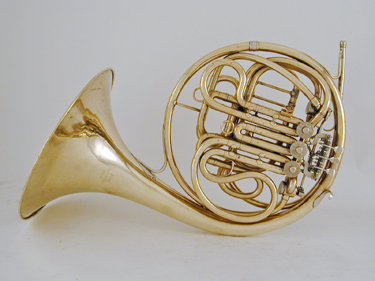 |
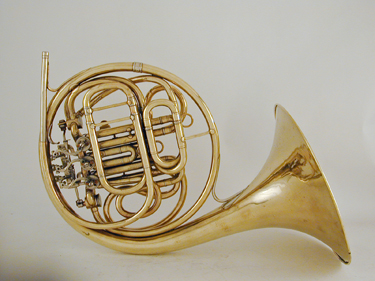 |
||||||
The horn shown above is one of only a few extant examples of the first full double horn by Firma Ed. Kruspe based on the company's utility patent of 1897 described in D.R.G.M. 84 240. 1 It was designed by Fritz Kruspe, son of the founder, Eduard Kruspe, and Edmund Gumpert,2 Two years after the announcement of the invention of the double horn, noted horn historian Hermann Eichborn wrote an extensive article in Zeitschrift für Instrumentenbau describing the general history of horn leading to the invention of the double horn. The illustration that accompanied Eichborn's article (below) matches the layout of this horn exactly except for the extra loop in the the F-extension. In particular, the lower leg of the third valve B♭side is oddly not parallel with the other valve legs, as can be seen in the above photos and the drawing below. |
|||||||
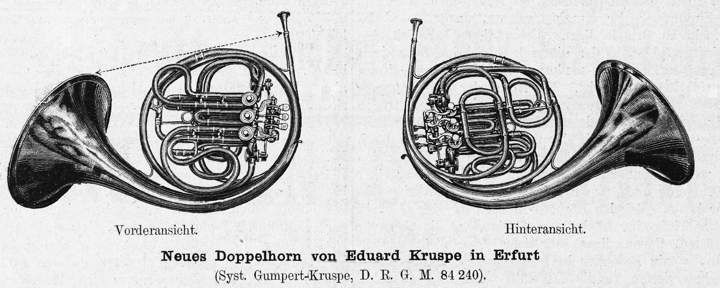 Zeitschrift für Instrumentenbau, November 1, 1899. p.98 |
|||||||
D.R.G.M. 84240 dated November 13, 1897 describes the valve structure of the horn in general terms. Its title is “Metal-Blechblasininstrument mit Doppelzylindermechanik und gelenkig verbundenen Stellventilen neben den Doppelzugventilen” (sheet-metal wind instrument with double cylinder mechanics and articulated connected control valves beside the double course valves). The protected innovations were the double-decker valves necessary for two sets of valve slides, and the tandem pair of rotors used as a change mechanism for F to B♭ (see diagram Fig. 2 below and the page for D.R.G.M. 84240 for a full analysis). It was announced a few weeks later in Zeitschrift für Instrumentenbau: |
|||||||
 Announcement of D.G.R.M. 84240 in Zeitschrift für Instrumentenbau, December 1, 1897, p. 181 |
|||||||
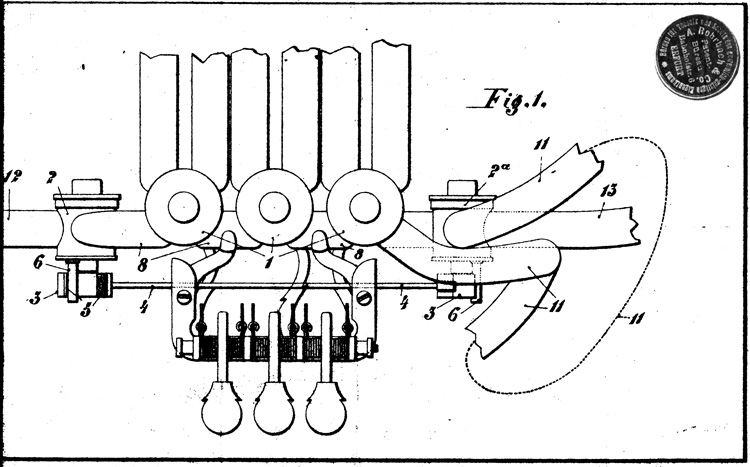 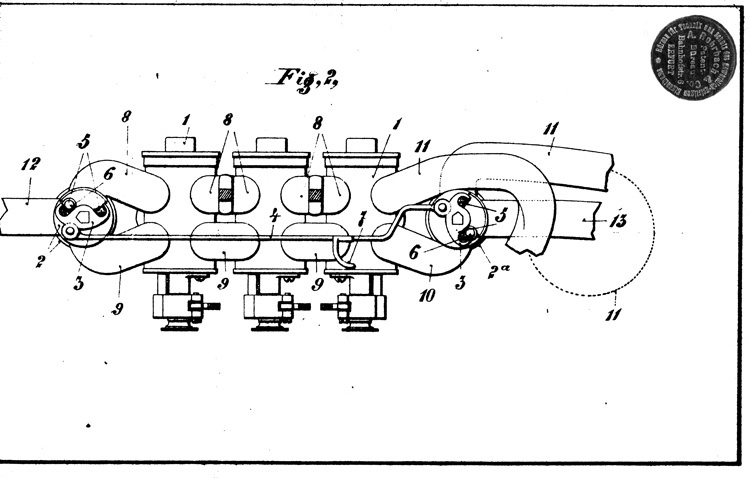 Figures 1 and 2 from D.R.G.M. 84240 courtesy of Tatehiko and Katsushi Sakaino
|
|||||||
The distinctive valve levers of this horn (below, and shown in Fig. 1 above) match those of a Kruspe single F horn and other Kruspe instruments from about the same period. Engraved valve caps are less common on Kruspe horns but are occasionally found as on another single F horn 3 from their short-lived Leipzig branch circa 1893. The elegantly shaped linkage arms (lower photo) are typical Kruspe. The presence of a thumb rest is clear evidence that the bell is not original to this horn (see text, below). The bell is probably a transplant from a single horn since a thumb rest serves no purpose on a double horn and only gets in the way of the change valve lever. |
|||||||
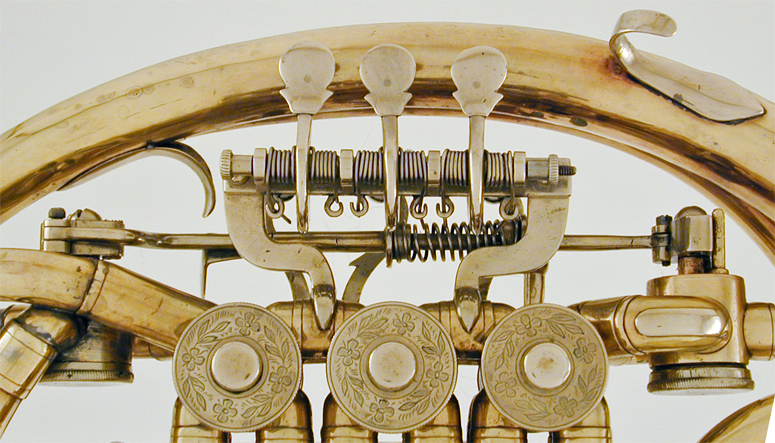 |
|||||||
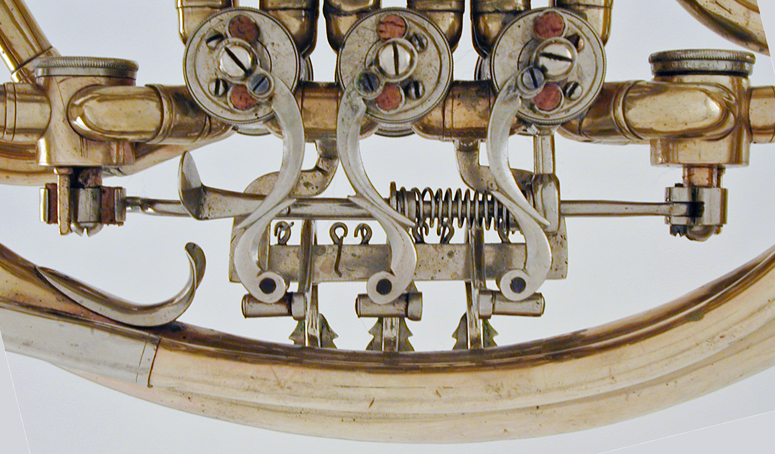 |
|||||||
 |
|||||||
The valve section is numbered "1" as shown on the casings of each the main valves (above). This is probably just a work number used by the maker to keep the parts of the valves together during assembly, but it is tempting to assume that this is the first valve section of this type. Details of this horn match those of a Kruspe single F horn from about the same period, The brace between the valve section and tuning slide (above) and the small braces between the valve tuning slide casings (right) are typical of Kruspe and match the referenced Kruspe single horn. |
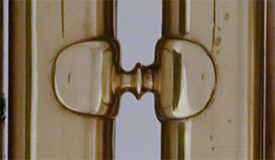 |
|
|
|
 |
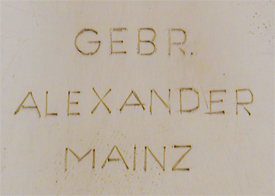 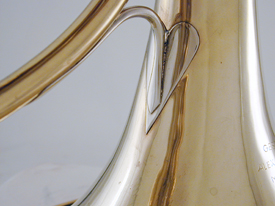 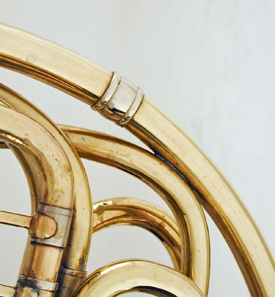 |
|
|
|